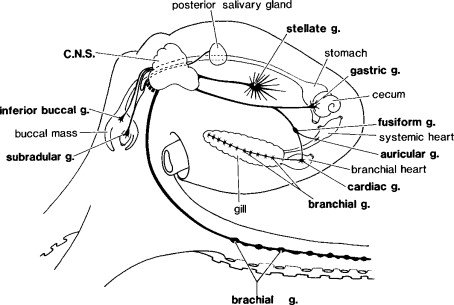
**Researchers Create Groundbreaking Computational Model of Octopus Limb**
**Summary**: A group of researchers has made significant progress in comprehending the intricacies of the octopus’ versatile arms. They developed an innovative computational model derived from the anatomy of nearly 200 muscle groups, examining how these remarkable animals execute their complex movements. Their findings indicate that, unexpectedly, the complex three-dimensional actions of an octopus arm are regulated by straightforward muscle activation patterns. This research not only enhances our understanding of biological systems but also has immense implications for the robotics sector.
[Access Complete Study in the *Proceedings of the National Academy of Sciences*](https://doi.org/10.1073/pnas.2318769121) | *Estimated reading time: 4 minutes*
—
### Unraveling Nature’s Most Adaptable Limb
In contrast to humans, whose movements are primarily controlled by the brain, octopuses possess a distinctive decentralized nervous system. A significant portion of their decision-making occurs within individual limbs. Each of an octopus’ eight arms can carry out separate movements, exploring almost limitless configurations and orientations. This ability to achieve infinite degrees of freedom has intrigued and baffled scientists for many years.
Prof. Mattia Gazzola, one of the primary researchers on the project, states that grasping how octopuses achieve this degree of flexibility could have wider ramifications. “The overall aim is to understand how to manage a complex system with numerous degrees of freedom and seek alternatives to costly computations. The octopus serves as an intriguing animal model that has attracted attention since the 1980s. [Researchers] aim to uncover the ‘secret’ behind its capabilities,” Gazzola remarks.
### From Living Octopus to Digital Model
To actualize this research, the team utilized a blend of experimental and computational methods. Through magnetic resonance imaging (MRI) and meticulous tissue analysis, they created an extremely detailed model of the muscles within the octopus arm. This process entailed identifying and charting the movement patterns of almost 200 distinct muscle groups.
However, theory alone was insufficient. The team observed real octopuses undertaking tasks, noting how these creatures engaged with their surroundings. One specific experiment tasked the octopus with reaching through a hole in a Plexiglas sheet to retrieve objects.
Prof. Gazzola compared the experience to working with highly curious and intelligent creatures. “It felt almost like interacting with a young child. You have to understand how to engage [the octopus] and maintain its interest,” he remarked, emphasizing the challenges and rewards encountered while studying these inquisitive marine animals.
### Streamlining the Complex
What may initially appear chaotic or intricate actually adhered to some surprisingly straightforward principles. The researchers discovered that instead of depending on thousands of degrees of freedom to execute its complicated movements, the motions of the octopus arm could be distilled down to just two essential physical characteristics: *writhe* and *twist*.
Writhe indicates how a curve (like an octopus arm) spirals and bends in three-dimensional space. Twist relates to how sections of the arm rotate around its central axis. These two fundamental aspects are tightly coordinated by various muscle groups, enabling the octopus to generate the kinds of sophisticated and adaptable movements witnessed.
“Rather than grappling with thousands of degrees of freedom, we connected two topological quantities—writhe and twist—to muscle dynamics,” Gazzola clarifies. This simplification could carry significant implications, especially for domains like **robotics**, where advanced computing is frequently needed to manage mechanical systems with numerous degrees of freedom.
Graduate student Arman Tekinalp, who was integral to the research, adds, “I find it incredibly fascinating to learn from live organisms and translate some of these insights into concepts for soft robotic design,” highlighting the link between biology and practical engineering applications.
—
### Glossary
– **Muscular hydrostat**: A type of biological structure (such as an octopus arm or human tongue) that does not contain bones and relies on the pressure created by surrounding muscles to facilitate movement.
– **Topology**: The field of mathematics focused on studying properties of shapes that maintain consistency despite stretching, twisting, and other transformations.
– **Writhe**: A quantification of how a curve (such as an octopus arm) loops and twists around itself in three-dimensional space.
– **Degrees of freedom**: The amount of independent movements a mechanism can execute. For example, rigid objects in 3D space generally possess six degrees of freedom—three for translation and three for rotation—while octopus arms exhibit essentially unlimited flexibility due to their muscular and hydrostatic design.
—
### Quiz
Let’s evaluate how well you’ve been following along!
1. **How many muscle groups comprise the octopus arm model created by the researchers?**
*Answer*: Nearly 200.
2. **In what way do octopuses differ from humans regarding brain organization?**